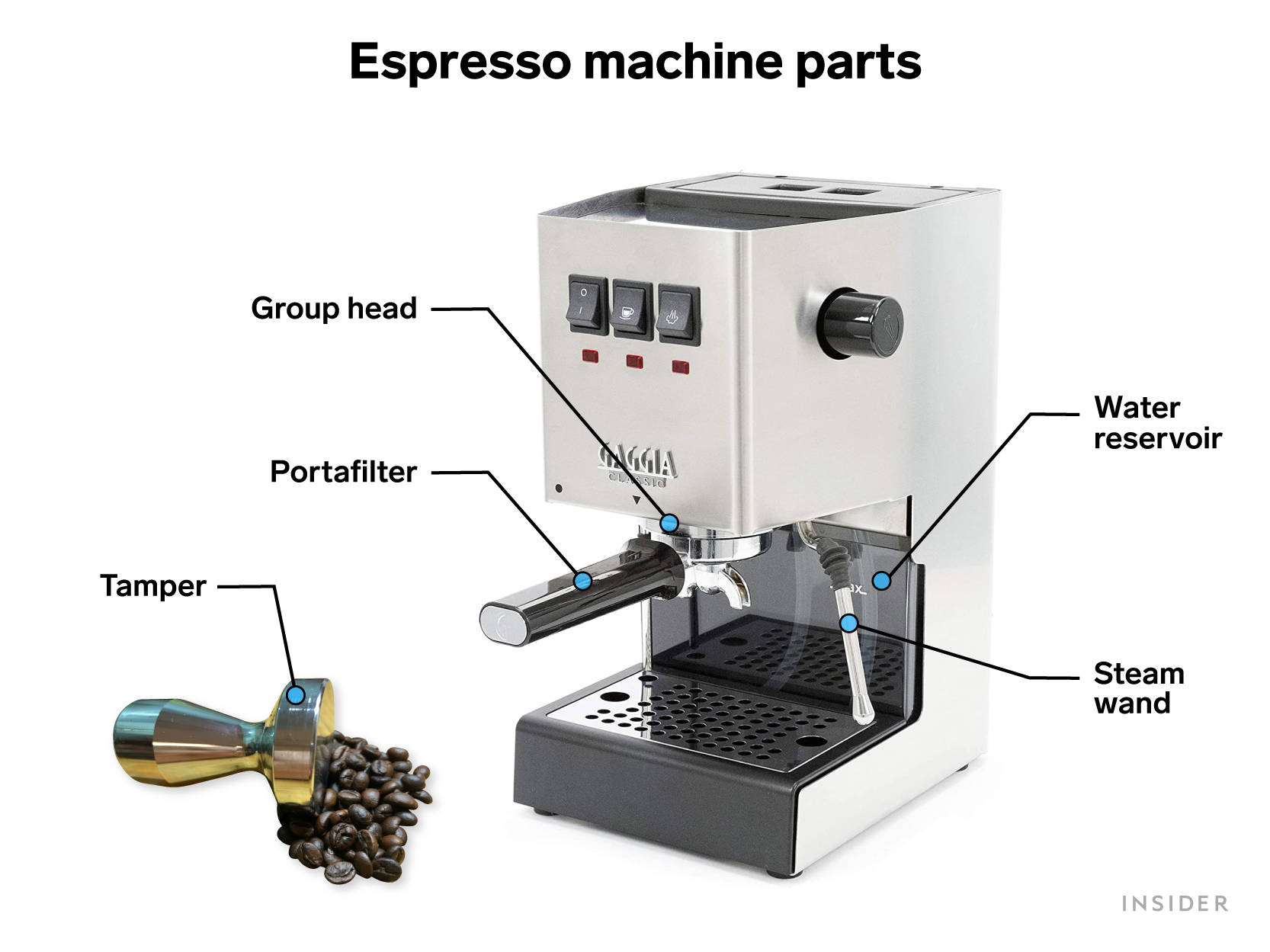
- Espresso is a concentrated form of coffee often enjoyed on its own or mixed with milk.
- Espresso can be made at home using an espresso machine.
- If you don't have an espresso machine, similar results can be made with an AeroPress or French press.
- Visit Insider's Home & Kitchen Reference library for more stories.
A shot or two of espresso will give you a nice caffeine boost. Whether you're adding it to a morning latte or sipping a solo shot in the afternoon, it has a more robust flavor and body than your average cup of drip coffee.
Cary Wong, a coffee educator with Partners Coffee, says espresso is defined as a brew method of making coffee. "It is unique and different from other brewed coffee because it uses highly pressurized water to force the coffee to extract quickly," he says. That extracted espresso then serves as the ideal base for making milk-based coffee drinks or to enjoy on its own.
But you don't always have to head to your nearest coffee shop to get it. You can make espresso at home using an espresso machine. And if you don't have an espresso machine, there are a few other ways to pull off similar results in a pinch.
The anatomy of an espresso machine

An espresso machine uses multiple elements to create a concentrated shot. According to Wong, espresso machines work by forcing hot water, that is between 195 to 205 degrees Fahrenheit, through a condensed puck of finely ground coffee. Nine bars of pressure are used to force the water through the grounds in a short amount of time.
The ground coffee is placed in the basket of a portafilter and a tamper is used to pack the grounds into a puck. The portafilter is attached to the group head, locked in place, and hot water located in a reservoir within the machine is pumped through it. The hot water is pushed through the group head to the portafilter at high pressure, causing the water to pass through the grounds and drip into the cup waiting for espresso.
Can you make espresso without an espresso machine?
While an espresso machine will make the ideal shot of espresso, there are a few other methods that can produce comparable results. Purists will tell you it's not truly espresso — and it's not — but you can get strong coffee concentrate that will behave similarly in drinks with the following methods.
French press

According to Wong, a French press can't recreate the results an espresso machine can when it comes to texture, but you are still able to get some of the same concentrated coffee oils and aromatics.
To start, use an automatic or manual grinder to grind an espresso roast to coarsely fine grounds. Next heat the water, boiling one cup for every two tablespoons of grounds. Combine the two into the French press, only pouring in enough hot water to cover the grounds.
Let the coffee and water sit for a few seconds to allow the coffee to bloom and concentrated flavor extraction to begin. Next, pour in the rest of the water and wait four minutes. After four minutes, steadily and slowly press the plunger of the French press down. Once plunged, you'll have dark, concentrated coffee that resembles espresso.
AeroPress

An AeroPress comes a bit closer to producing an espresso made using an espresso machine. "An AeroPress can create a highly concentrated cup of coffee but won't achieve the nice crema and body that commercial and home espresso machines produce," says Wong.
Like with a French press, begin by finely grinding an espresso roast and heating the water (one cup for every two tablespoons of grounds). Then rinse and place the AeroPress filter. Attach the drain cap, and position the press on top of a sturdy mug. Pour the grounds into the AeroPress, and use a cylindrical object such a muddler to tamp them down into the press. Follow that up with the boiling water. Stir the two together and wait 30 seconds. Finally, carefully push the plunger of the AeroPress down until all of the espresso is pushed out.
Serving suggestions
While drinking espresso on its own is a popular choice, there are plenty of other ways to enjoy it.
- Americano: To lighten up the concentrated flavor of espresso, add an equal amount of hot water.
- Affogato: Add a scoop of vanilla ice cream or gelato into a small bowl or mug and pour the hot espresso on top for an invigorating sweet treat.
- Cappuccino: For a creamy coffee drink, pair espresso with equal parts steamed milk and frothed milk on top. A cappuccino typically isn't flavored but can be topped with cinnamon or cocoa powder.
- Espresso con panna: For a hint of sweetness, pair espresso with a dollop of whipped cream on top. Use good-quality whipped cream or make your own at home.
- Mocha: When in doubt, just add some chocolate syrup into a mug. Top it with espresso, stir, and then pour steamed milk on top for a sweeter, caffeine-infused drink.
Insider's takeaway
A shot or two of espresso is a popular choice, whether enjoyed in a coffee drink or on its own. And while it's common to head to your local coffee shop for espresso, it can also be made at home. An espresso machine will produce the best results for true espresso, but you can still achieve a similar concentrated flavor with at-home alternatives such as a French press and AeroPress.
